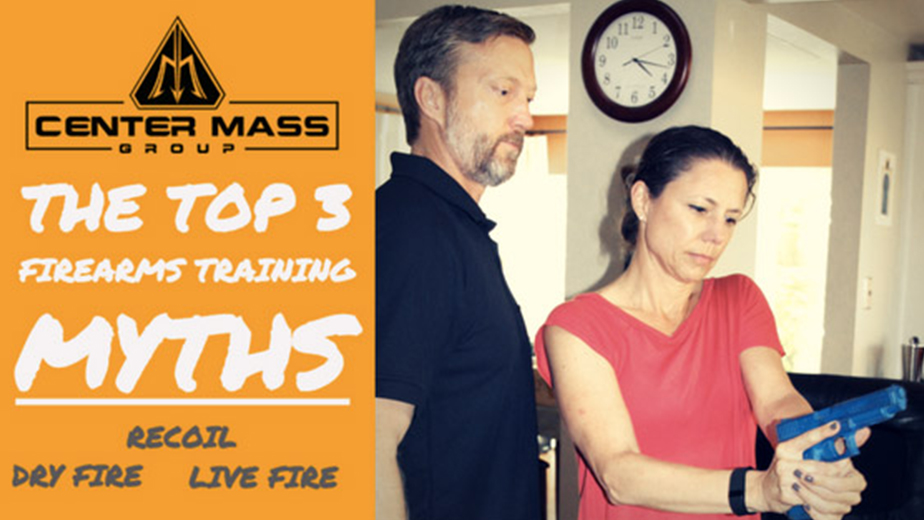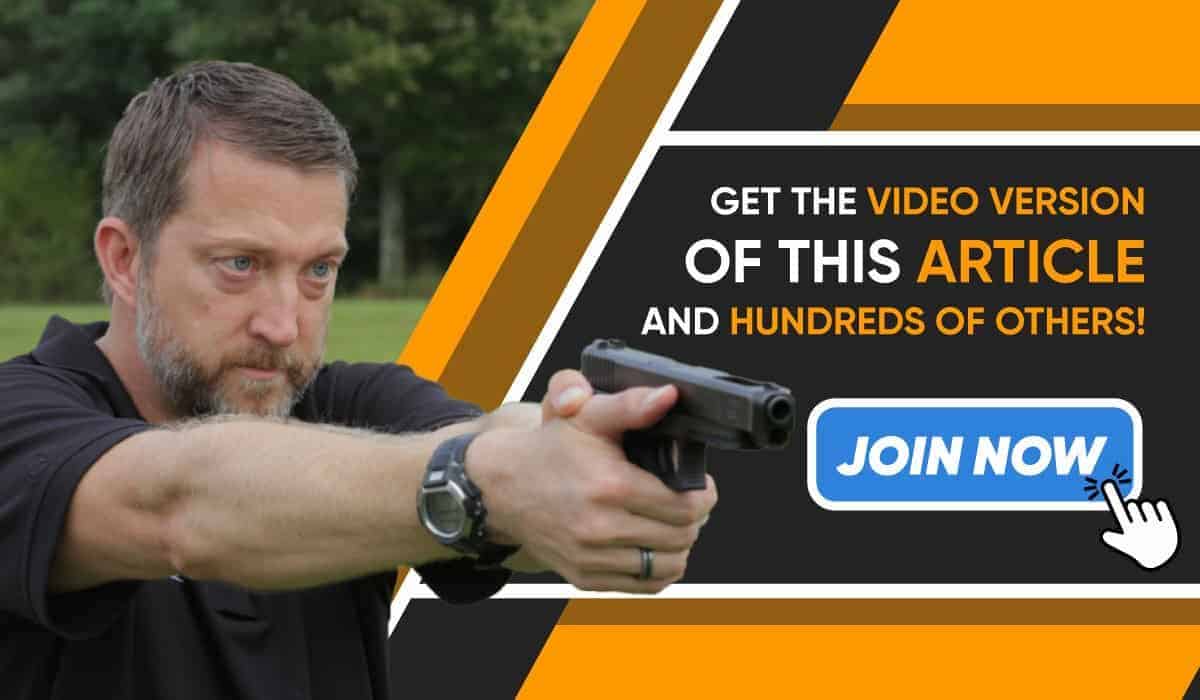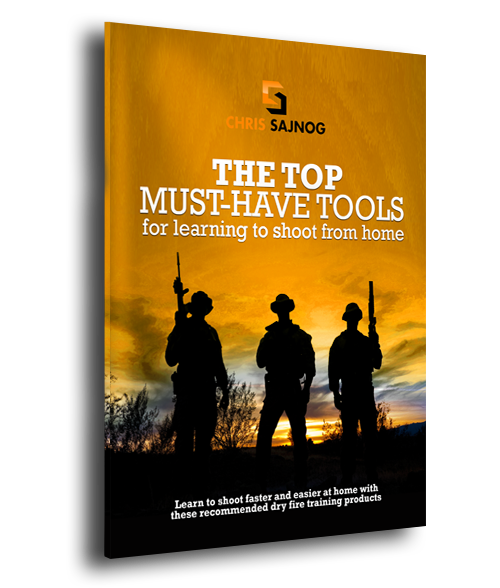The Top 3 Firearms Training Myths and How to Fix Them [VIDEO]
OK, so if you know me, you know I have a passion for two things. Teaching other people how to shoot and spending as much time as possible with my two boys. To accomplish this, I developed the New Rules of Marksmanship Training System, which focuses on learning to shoot at home. In this video, you’re going to help me debunk the three biggest myths I’ve heard over the past 25 years of training thousands of people just like you, so that when you hear them, you’ll know the truth. So what are they?
THE BIG 3
#1 The Myth of Controlling Recoil
#2 The Myth that Dry Fire Damages your Gun and
#3 The Myth of Where You Should be Training
Click to watch the video…
Here are biggest firearms training myths 99% of people learning to shoot hear and how to instantly fix them.
The Myth of Recoil and the Flinch
This one is number one on the list because I hear it all time, “it’s not effective training if there is no recoil”! Or that “the Flinch” or anticipation when shooting is a biological response.So first off, let’s debunk this old-school myth that the gun IS going to recoil or jump out of your hands when you shoot
Well, the fix is easy – learn how to hold the gun BEFORE you start making it go bang.
Next up, is the flinch or anticipation when shooting. Here’s what you need to understand – that “natural response” IS built into our system when there IS a threat to your head…BUT, when you’ve got the gun pointed the other direction, there is no threat to your head! So that old-school thinking is Bio 101. But, in Psych 101, you learn about conditioned response. And I’m sure you know this, but for those who don’t – conditioned response is simply something you learn to do or react to when something happens.
Think about this, if you get a dog from the pound that was beaten it’s whole life, what’s going to happen when you reach out to pet it? It’s going to “Flinch” or … “recoil” … away from you. Is your hand a threat to the puppy? Obviously not, and neither is that little explosion going on inside the gun.
The Myth of Dry Fire Damage
Your firearm is made to withstand the force of an EXPLOSION going off in its chamber, for thousands of rounds. So dry firing is not going to damage it, and if it does – thank GOD you were dry firing, because if it broke on the range when you were shooting, (which it would have done much sooner by the way), that can cause serious damage to YOU. Forget about the poorly made firearm.
Unless you’re firing a rimfire or a poorly made or old firearm, dry fire training is going to do less damage to your firearm than live fire. If you are concerned about that, then use snap caps or better yet, use a product like the iTarget Training system that I’m going to talk about shortly
The Myth of Where to Train
OK, so I saved the biggest most ludicrous myth for last and this is going to change your view on training forever! SO many people say, “Training with with airsoft isn’t realistic,” “training with dry fire or using laser targets is not realistic.”… Here’s what I ask those people and I want you to stop right now and ask yourself this same question…Is shooting a paper target that can’t move, can’t shoot back AND is directly in front of you realistic? Come on? Tell me a light bulb just came on!
Now don’t get me wrong, there is a time and a place for live fire and it’s something you must do to verify your training, BUT the range is NOT the best place to train. You should be learning at home, and there are some great systems out there that weren’t available even a few years ago.
That’s it for this video, but I want you to remember these three things:
- Recoil is a myth that is busted by learning how to hold the gun.
- Dry Fire is only going to Damage your gun if it’s a rimfire or it’s damaged.
- The best place for you to train is at home.
If you have questions or comments, leave them below the video and until we train again, keep paving your path to perfection.
You can check out the iTarget here: https://www.itargetpro.com/



